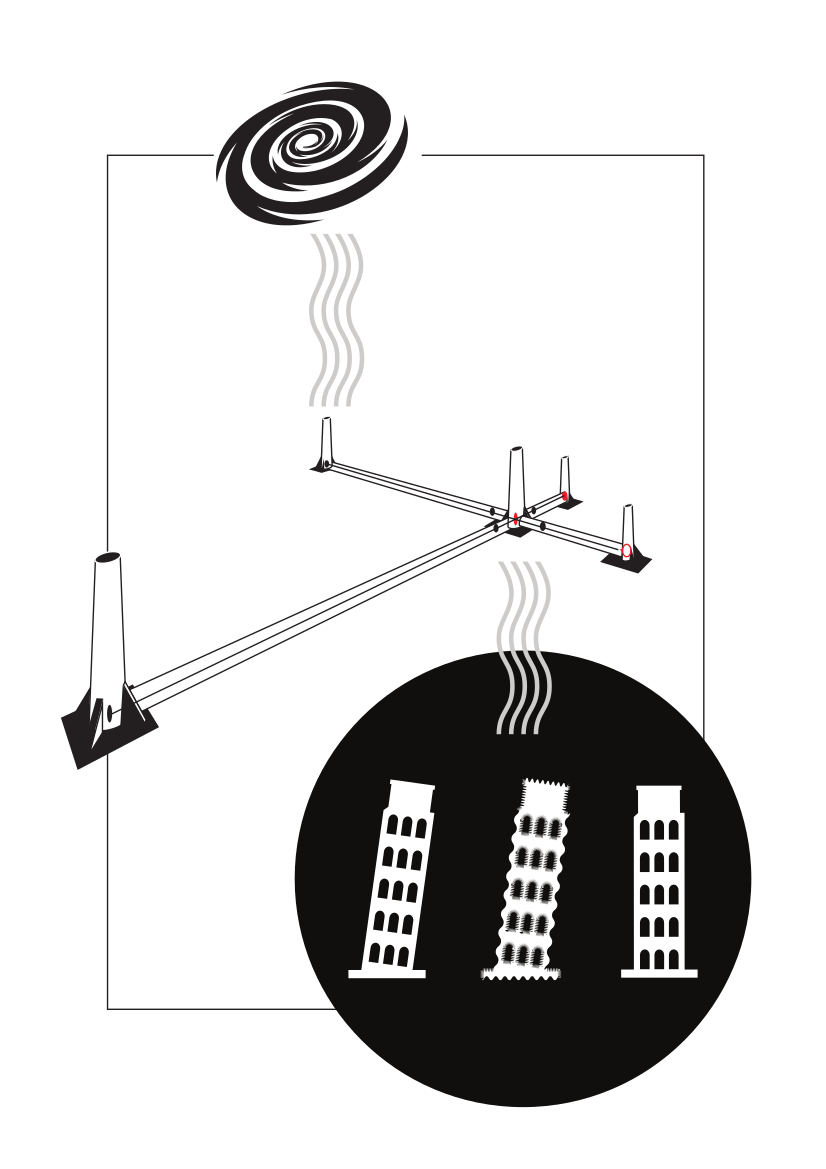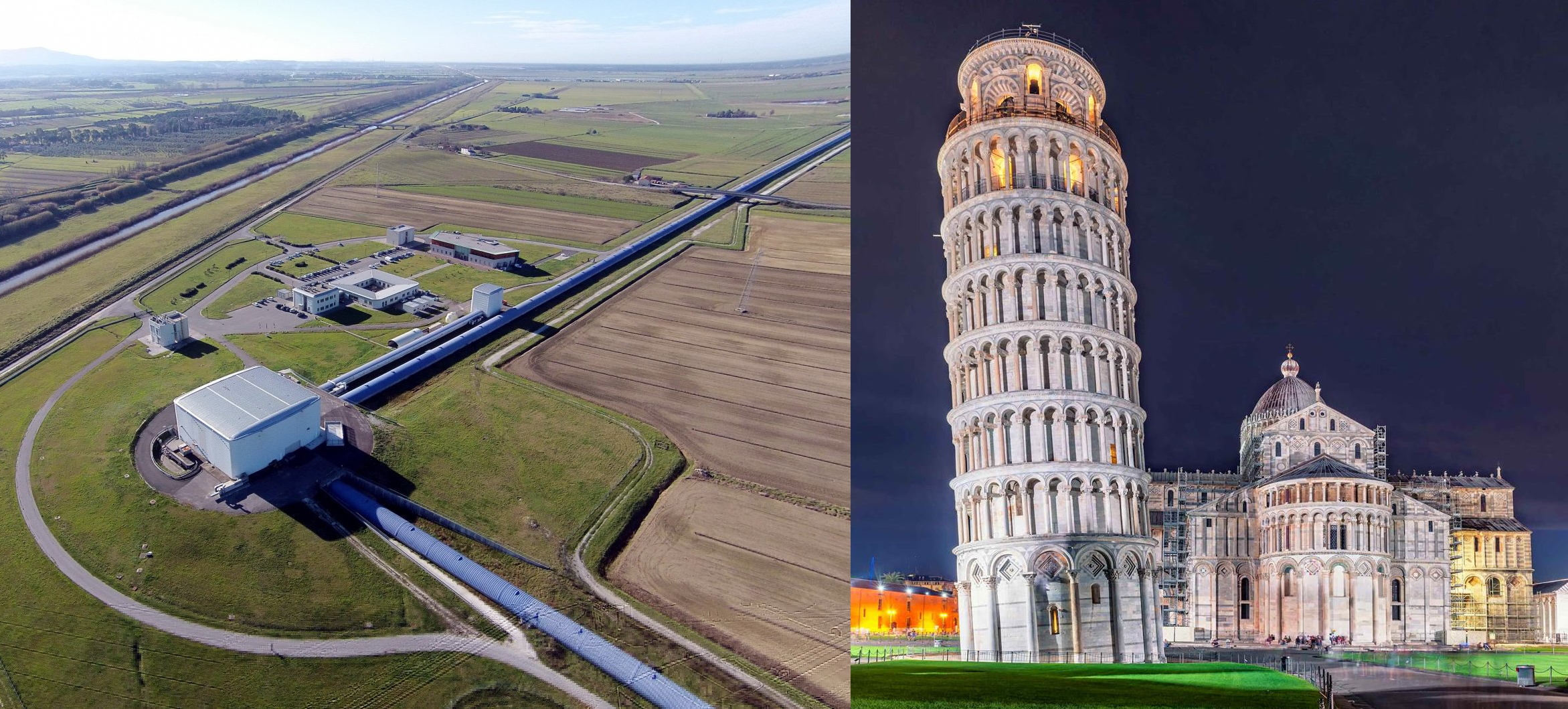[This post was an April Fool’s Day joke, Virgo can “only” detect gravitational waves, not redirect them, and the Tower of Pisa will stay in the tilted position we all know and love.]
From the cosmos comes the solution to a 900-year-old problem: finally there is a way to straighten the leaning tower of Pisa, thanks to gravitational waves. The extraordinary technology that will make it possible is the result of years of research from scientists of the Virgo Collaboration. The Virgo interferometer (located in Cascina, near Pisa) is normally used to catch gravitational wave signals from very powerful cosmic events. Now researchers have found a way to redirect these gravitational waves to a nearby point, and use them to slightly warp time and space, which is just what the leaning tower of Pisa would need to finally go back to its intended upright position.
The tower, built in the 12th century, started to sink even before its completion. Recently, after extensive restoration work, the tower was returned to its original inclination, but we know that it will start tilting again in the next few years, albeit very slowly. In any case, technology is available at this point that could easily place the Tower in the inclination that we prefer or that is considered most appropriate by art historians. In fact, it will probably not be a matter of straightening it completely, since it is precisely its inclination that makes it special and a world famous symbol of Italy.

A schematic illustration of the “rebounce” technology developed by Virgo researchers
It is, however, extraordinary that such a technology comes from the collision of black holes thousands of light years from Earth. These events create tiny deformations in time and space that travel to Earth and can be detected by instruments like Virgo. When this new technology has been fine-tuned, Virgo will also be able to redirect gravitational waves to a specific point in space-time and warp it slightly in any direction it chooses. This will have many great applications and, since the Leaning Tower of Pisa is less than 20 km away, it will be a perfect testing opportunity.
The famous art historian Carlo Giulio Nagra also commented with great satisfaction the result obtained at the nearby European Gravitational Observatory : ‘This new technology is an extraordinary example of synergy between frontier science and cultural heritage conservation. In the future, we could even imagine periodically varying the inclination of the Tower, reproducing the skyline of Piazza dei Miracoli, as it must have appeared in past centuries”.

